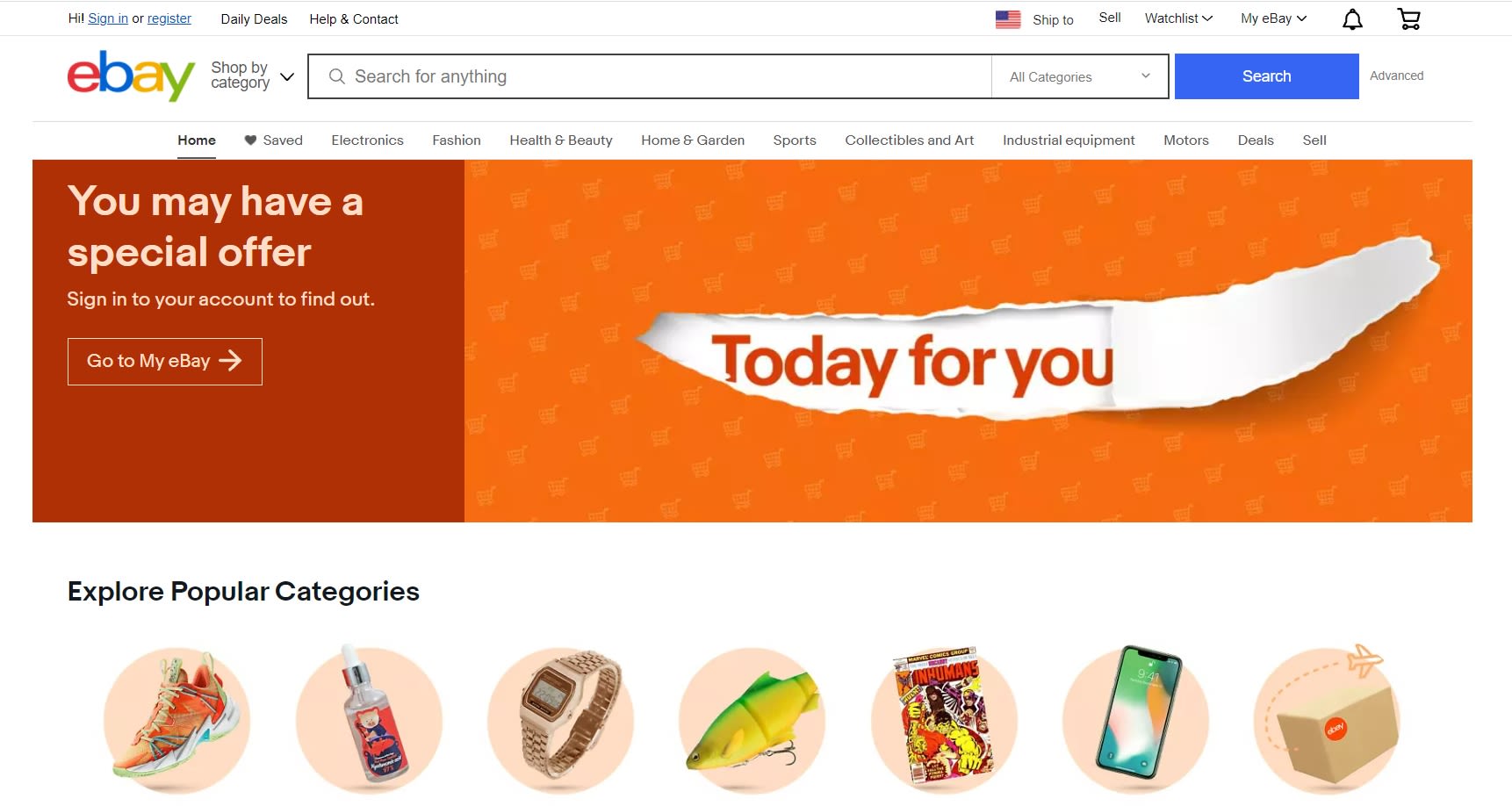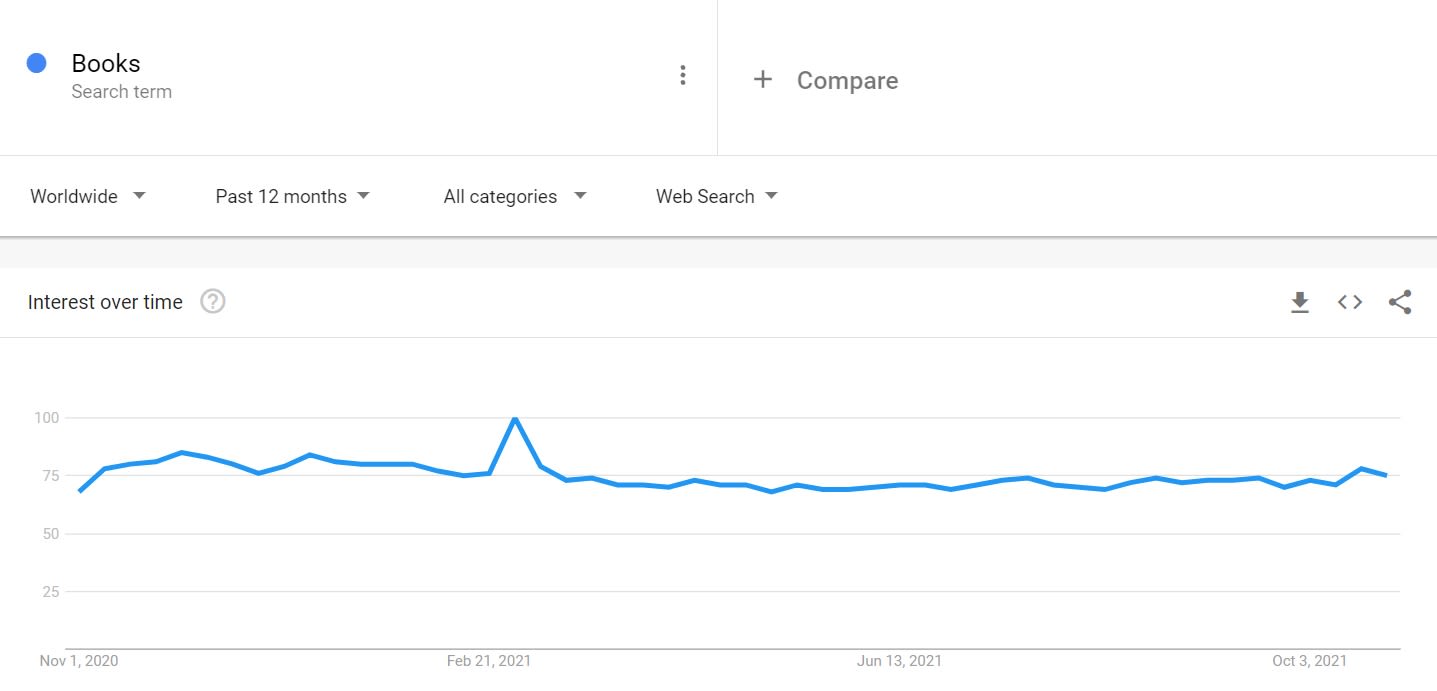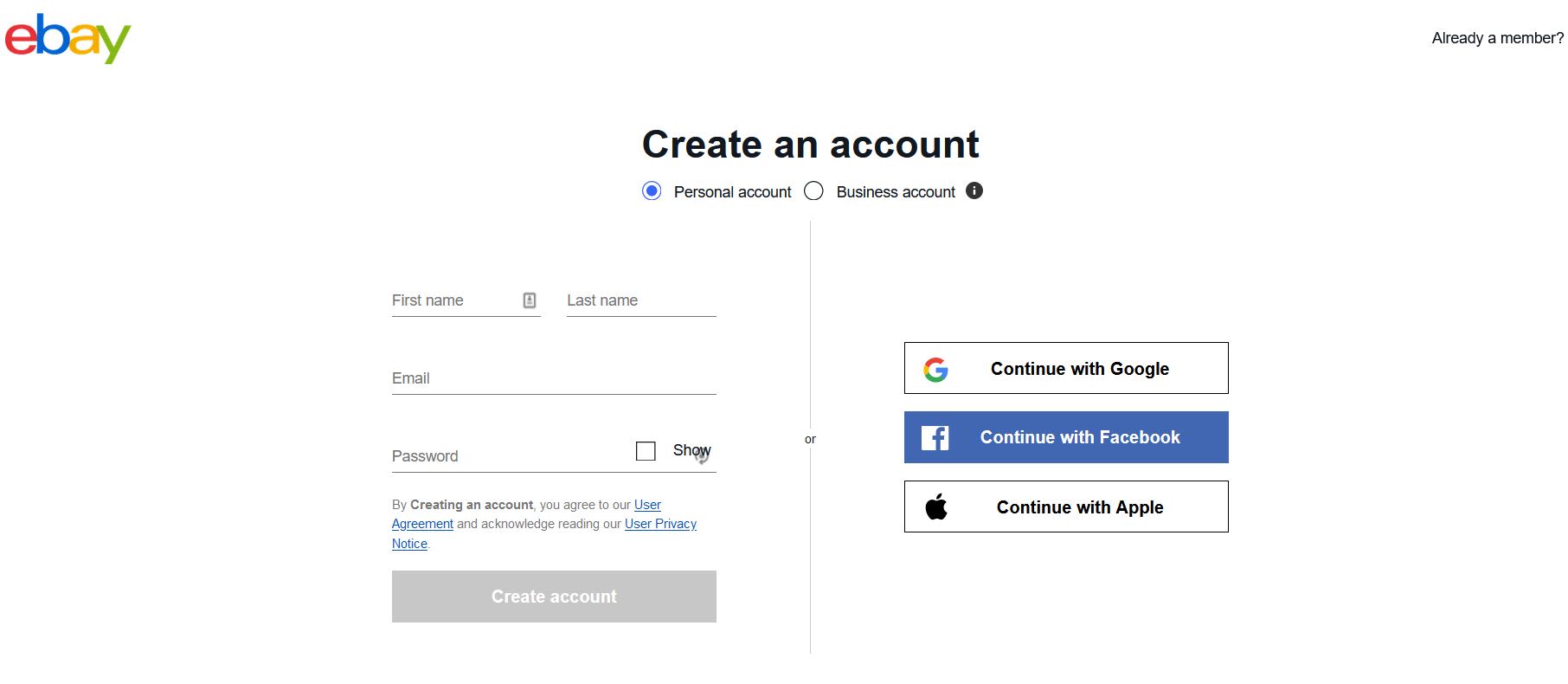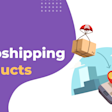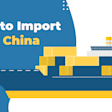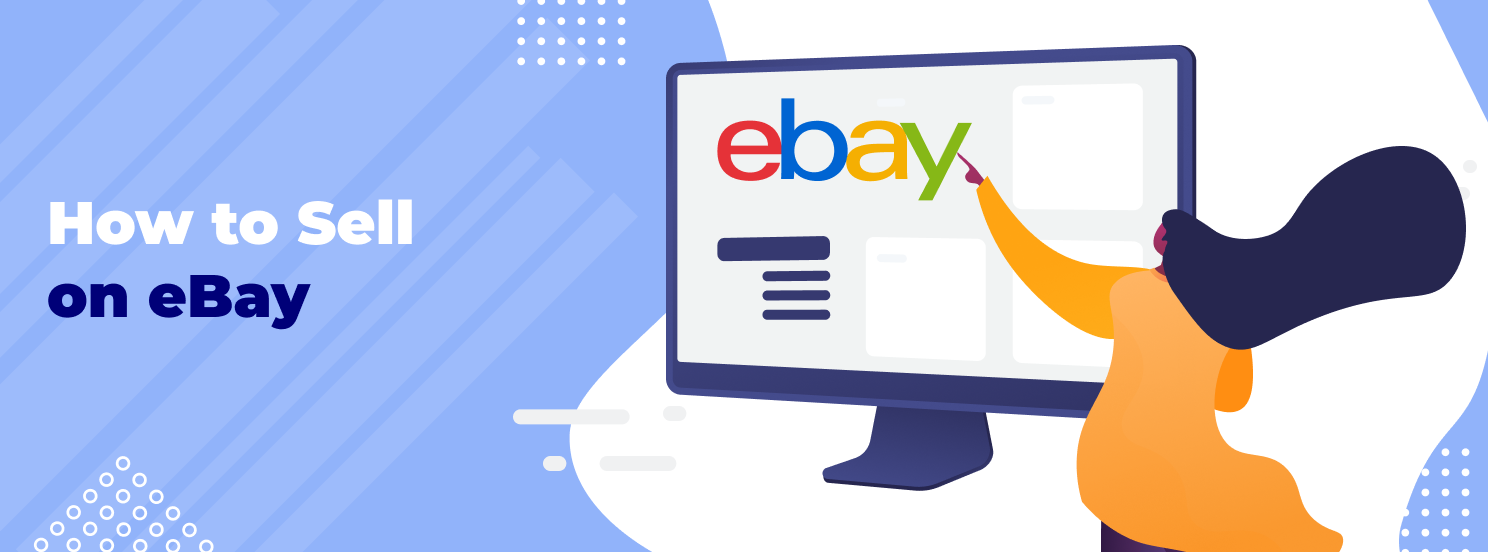
How to Sell on eBay for Beginners: 6 Easy Steps
eBay is one of the largest online marketplaces in the world. Whether you’re a single person looking to sell your used goods or a business looking for a channel to grow your customer base, eBay has a lot to offer its sellers.
In this guide, we will examine how to sell on eBay for beginners. It will cover everything from how to find winning products to how to set up your account and manage shipments.
Table of contents
Let’s get started.
What is eBay?
eBay was founded in 1995 and has grown to become the second-largest eCommerce marketplace in the United States, behind only Amazon. In its early years, the marketplace was known as the place where anyone could come to buy and sell something using an online auction.
Sellers would list their items for auction and buyers would place bids, with the item ultimately going to the highest bidder. While this sales method is what the marketplace has been traditionally known for, eBay has steadily grown as a buy-it-now marketplace where customers can purchase items instantly at a fixed price. Most of the company’s sales revenue now comes from fixed-priced listings.
Similarly, the market has grown from having a selection of primarily used and off-brand products to becoming a great place to buy and sell new and branded products as well.
Start Selling on eBay: A Step-By-Step Guide
Getting set up to sell on eBay is fast, easy and you can do it for free. Below are the steps you need to take to become an eBay seller:
1. Choose Your Business Model
The first step to selling on eBay is to choose your business model. Because there are limited requirements for selling on eBay, you do not need to form a legal business or source a large number of products to begin selling.
Start by deciding whether to list your items for an auction or at a fixed price. With an auction, potential customers have the ability to submit bids on your products for a set period of time. These bidding periods can range from one to 10 days. Sellers can set a minimum requirement for any bids.
At the end of the bidding period, the highest bidder wins the item. If the item does not sell during the auction, you can re-list on the marketplace but will need to pay new insertion fees to do so.
With a fixed price item, you set the sales price for the item the same way you would when listing the product on your own eCommerce site. Shoppers that visit the product listing can buy the item instantly at the price you set.
Fixed-price listings are “good till canceled”. This means that the product will automatically be re-listed every 30 days until a customer buys it. In this situation, you will need to pay additional fees to re-list the products.
Once you determine your ideal selling method, you can evaluate the best type of model to use for selling your items on eBay. Here are some of the most common business models for eBay sellers.
Selling Your Old Stuff
eBay is the original go-to place for people looking to safely sell their used items to make money. If you have things lying around that you no longer need, you can quickly list these items for sale and/or auction with eBay.
There are plenty of used products like this across the range of eBay’s categories. Some of the best types of used goods to sell on eBay are video games, furniture, jewelry, books, vintage items, and collectibles.
Sell High-Priced or Rare Items
eBay is a great place to sell rare and valuable items. With an auction-based listing, you can earn even more for your valuable items by getting potential buyers to drive up the price with their bids.
Some of the best rare items to sell on eBay are watches, coins, and vintage items.
Sell as a Business
If you want to invest more heavily into eBay as a sales channel, you can sell as a business. As a business, you can offer a more diverse selection of products while sourcing more inventory for each one.
Below are the most common ways to sell on eBay as a business:
Wholesale: With wholesaling, you buy other brands’ products in bulk from a supplier. You then list these items at a higher price, keeping the margin as a profit.
Private label: With private labeling, you partner with a supplier to create products with custom branding. You then list and sell these items on eBay under your brand name.
Dropshipping: With dropshipping, you partner with a supplier and list their items on eBay. When a customer places an order, you then buy the items from the supplier and have them ship the order directly to the customer. eBay is one of the best marketplaces to dropship products as they have less stringent shipping requirements.
Arbitrage: With the arbitrage model, you find items that are available for a lower price from other retailers. You then buy the product from the retailer and list it on eBay for a higher price, keeping the difference as a profit. This model works well if you only want to sell a small number of products.
2. Decide What to Sell
After you choose your business model, you will want to decide the specific products that you want to sell. The product research process is an important part of selling on eBay as you want to ensure that you pick an item that you can sell successfully for a profit.
There are some restricted items that can’t be listed on eBay, but for the most part, you can list products in any category that you like.
Here are the best selling product categories on eBay:
Mobile Phone and Accessories.
Video Games.
Laptops.
Clothing and Jewelry.
Health and Beauty.
Home and Garden.
Crafts.
Art.
Furniture.
Books.
Check Trends to Find In-demand Products
You should start your product research by looking for trending products using a tool like Google Trends. With the tool, you can see how interest in particular search terms is changing over time. This allows you to know what customers are currently demanding the most.
Another way to check product trends is to search eBay’s trending deals page. The page showcases trending products that are currently running promotions. You can filter the deals page by category to easily find product ideas in your desired niche.
Explore New Ideas Using Product Research Tools
Trends are an effective way to see what customers are looking for but if you want to find an item that stands out, you’ll need to conduct further research. One of the best ways to thoroughly assess the viability of a product is to use a product research tool. Doing so gives you direct insight into a potential product’s historic performance and current position in the market.
Now, most product research tools do not offer data for items on eBay. However, you can still use a tool designed for another marketplace such as Amazon to get a better understanding of a potential product.
A great example of one such tool is the AMZScout Product Database. The Database contains extensive details for millions of products listed on Amazon. With it, you can see an item’s sales, revenue, rating, reviews, and much more.
Using the tool is easy. You simply need to search for the type of product that you are looking for and the software will generate all matching results. You can search using a keyword or by defining specific criteria such as price, size, listing quality, and category, among others.
With this data, you can quickly find new product ideas that meet the exact traits you want in an item. Additionally, the insights the software provides will give you a clearer idea of how a product will perform so that you can plan with greater efficiency.
Know the Seller Fees for Different Types of Products
Lastly, you will want to consider how much it costs to sell a particular product. eBay charges a final value fee for each sale. The fee is a percentage of the order value (including shipping), plus 30 cents. The rate for final value fees is determined by the product’s category. Most categories have a rate of 12.35%.
Below are the final value fees for other types of products on eBay.
Musical Instruments & Gear > Guitars & Basses: 5.85%.
Books, DVDs & Movies, Music: 14.35%.
Select Business & Industrial categories: 4.35%.
Select Clothing, Shoes & Accessories categories: 0% if the selling price is $100 or more.
3. Create a Seller Account
Once you decide what products you want to sell on eBay, you can go ahead and create your seller account. eBay has two types of seller accounts: Personal and Business.
With a Personal account, you have a limited number of items that you can list and sell each month. If you are a new seller, this starts at up to 10 items per month, totaling up to $500 in value. With a Business account, these limits are removed and you can list more items with a higher total value.
Essentially, if you only plan to sell one or a few products, a personal account is all you need but if you want to sell more, you will likely need a Business account.
1. Enter Your Personal Information to Set Up the Account
If you already have an eBay account that you would like to use as your seller account, you can get started by logging into your current account and clicking the Sell link in the upper right corner of the site.
If you do not have an account, go to the Create an account page to begin the setup process. The first thing to do is to select a Personal or Business account.
If you select a Personal account, you will simply need to provide your name, email, and password to create your account. You also have the option of creating your account by authorizing a single sign-on (SSO) for your Google, Facebook, or Apple accounts.
If you select to create a Business account, you will need to provide your business name, business email, and password.
2. Choose Your Payment Method
Before you can start adding your products to eBay, you will have to add a preferred payment method to your account. A payment method is needed to both receive sales proceeds and pay any seller fees to eBay. You can choose between credit card, debit card, and bank for paying selling fees. After you set up the payment method, eBay will automatically charge it on the date of your seller invoice for any fees that you owe.
For payouts, eBay traditionally paid sellers exclusively through PayPal. Anyone that wanted to receive the earnings from their sales needed to create a PayPal account and link it to their eBay seller account. But now, eBay handles all seller payments through their Managed Payments service. When an item sells, eBay sends your payouts directly to your bank account.
To add a payment method, go to Account > Payment information > Payments. You will then need to sign up for Managed Payments by providing some basic identity verification details such as your date of birth and the last four digits of your social security number.
Once you do, return to the Payments page and click Add payment option. You can then add the payment method that you want to use for selling fees and your bank account to receive your sales profits.
Managed Payments makes it easier to manage your selling fees as it will automatically deduct them from your sales earnings. In the past, eBay would not invoice you for selling fees until the end of the month.
3. Unlock More Features with eBay Store
In addition to creating a business account, you can unlock more features as an eBay seller by creating a Store. By subscribing to eBay Store, you can personalize your seller profile to make your brand stand out to potential customers.
Along with these benefits, Store subscribers also get to enjoy the following:
Lower selling fees.
Better visibility in search results.
Discounts on shipping supplies.
Pricing for eBay Store starts at $4.95 per month. You can learn more about the details by visiting their website.
4. Make a Product Listing
Once you finish getting your account set up, the next step is to begin creating your product listings.
From your eBay account, click Sell to go to your Seller Hub. On the next page, click Create listing and a dropdown menu will appear asking if you want to create a single listing or multiple listings. Click the appropriate option to proceed.
On the next page, you will be prompted to provide information about the item you want to sell. You can enter its name, UPC, ISBN, or other identifying information into the search field. Upon entering a search, eBay will display items in the catalog that match the search criteria.
If you find an item that is similar to the one that you want to sell, you can click Select and then Use this product. Doing so will create a duplicate of the listing which you can use to quickly modify with your own product information.
The other way to create a listing when selling on eBay is to start from scratch. To create a new listing, you need to access the Create a listing page from your Seller Hub the same way you did when creating the duplicate.
After you enter the search for the type of product you want to sell, scroll past the results to the bottom of the page and click Continue without selecting a product.
After you click the button, eBay will create a fresh listing draft for you to add your product details. In addition to adding images, features, and descriptions, you will also need to specify the following:
Selling format (auction, buy now).
Payment options.
Shipping options (service used and whether you ship internationally).
Return policy.
Sales tax.
Once you populate the essential product details, eBay will calculate the estimated fees associated with selling the item. You can see these fees at the bottom of the listing creation page.
5. Manage Your Shipments
As your items begin to sell on eBay, you will need to manage how you ship the products to your customers. When you receive an order, eBay will send you a notification containing the order details. You can click the link in the notification to arrive at a page to manage the order. From your seller account, you then have the ability to print shipping labels, add tracking information, and mark the order as shipped.
Tips for Shipping Your eBay Orders
If you plan to sell a lot of products, make sure to have enough packing suppliers on hand to be able to send out orders the moment they come in. As a best practice, you want to ship all orders within 48 hours of receiving the customer’s payment. This will ensure everyone gets their orders quickly and that you receive positive feedback as a seller.
eBay doesn’t have as strict of requirements as Amazon. So you can package your items however you like. Just make sure they are secure enough to arrive at your customer’s destination undamaged.
Other Delivery Methods
If you do not want to fulfill orders yourself, you can use a third-party logistics (3PL) provider to handle deliveries for you. Unlike marketplaces like Amazon and Walmart, eBay does not have its own fulfillment service. The company at one point planned to launch its own fulfillment service called Managed Delivery. However, this fell through in early 2020 as the company decided to not pursue the initiative.
6. Promote Your Products
With your logistics squared away, it is time to begin promoting your products. By actively marketing your eBay listings you can drive more visitors to your items which will ultimately lead to more sales. There are several ways you can choose to promote your eBay listings. Below are some of the most effective methods
Optimize Your Listings for SEO
Like selling through your own eCommerce website, search engine optimization (SEO) is important to get your products in front of the users that are searching for that type of item. You will want to discover all the keywords your potential customers use so you can begin optimizing your listings accordingly.
To make your listings visible to all relevant searches, you should include important attributes as keywords in your listing titles and descriptions. This includes
Brand.
Size.
Color.
Model.
Use eBay Advertising
Another way to promote your eBay products is to use their advertising service. With Promoted Listings, your items have increased visibility and will appear to shoppers as they search and browse the marketplace. Unlike many other types of ads, with eBay advertising, you only pay the ad fee upon a customer making a purchase, rather than simply clicking on the ad.
Market on Social Media
Social media platforms are a great way to get in front of your target audience. You can create profiles for your business on major platforms like Facebook and Instagram and begin posting content and engaging with your audience. You can also run paid advertisements through these platforms to drive potential customers
Is it Worth Selling on eBay?
There are both pros and cons to selling on eBay. Let’s examine these further:
Pros of Selling on eBay
Easy to start selling: One of the biggest benefits of selling on eBay is how easy it is to get started. You do not need to pay any fees to list your first set of products and there is no extensive approval process.
Can sell a wide variety of products: You can find pretty much anything on eBay. This makes it a great place to effectively sell things that may not have a strong demand on other marketplaces.
Worldwide audience: eBay has a large global audience, enabling you to tap into the international market.
Cons of Selling on eBay
Insertion fees: These are the fees that eBay charges you for listing a product. You get to list some products for free and the amount may seem small but it can add up if you plan to list a lot of products.
High competition: Because it is so easy to start selling on eBay, many product niches are over-saturated with too many sellers. This makes it harder for new sellers to get a sizable share of the market.
Low margins: eBay sellers tend to price their items very low, making it more difficult for the market as a whole to earn solid margins.
No native fulfillment service: eBay does not have its own fulfillment service meaning you will need to handle deliveries yourself or rely on a third-party partner.
Alternatives to Selling on eBay
While there are several notable benefits to selling on eBay, it is not the only eCommerce marketplace worth considering. In fact, there are several markets that tend to be more advantageous to sellers looking to make money.
The most obvious is Amazon. Beyond getting access to a massive customer base, the world’s largest online marketplace also makes it easy to sell and you can use their FBA fulfillment service to offer buyers world-class delivery speed with no effort on your end.
Most Amazon product categories are less competitive when compared to eBay and you can sell items at a better profit margin as eBay sellers tend to start a race to the bottom.
Plus, you do not have to pay a listing fee for each of your products and there are copious amounts of Amazon-specific selling tools to help research your market and manage your business.
Conclusion
Selling through eBay can be an effective way to expand your eCommerce sales. If you are considering becoming an eBay seller, use the steps in this guide to quickly get optimized product listings in front of your target customers.

